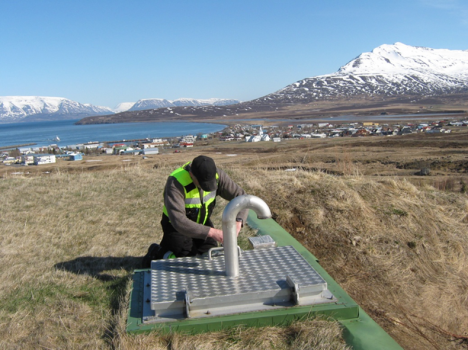Governance and management of small rural water supplies: A comparative study

Small scale and rural water supplies present well-recognised problems to policymakers, regulators, service providers, communities and water users, all over the world. Small supplies across the European Union and internationally have been associated with inconsistent, or lower than required, frequency of monitoring and reporting of their status; non-compliances with microbiological and chemical quality standards; and unclear legal responsibilities for both operators and regulators in the case of a disease outbreak or non-compliances (Sinisi & Aertgeerts 2011; Rickert & Schmoll 2011; Eureau 2011; WHO 2012; European Commission 2014a; 2014b). This study was designed to make a wider comparative analysis of the governance, regulation and management of small rural water supplies across Member States of the European Union and other jurisdictions, and then make an in-depth analysis of selected case studies, supplemented by interviews and a stakeholder workshop.
This research clearly demonstrated that there are similar problems with small supplies all over the world; and that governance frameworks are relevant regardless of the form of ownership or type of management. It also showed that there are still many issues around definitions and terminology which can confuse the debate, as well as difficulties with consistency of data. Risk assessment, for example through Water Safety Plans, is a focus for service delivery at every scale, but for small and very small supplies, it is especially important to provide clear, userfriendly information and support, which is easily accessible to users. It is also important that obligations for suppliers and users are clear and understandable.
The effect of natural flood management in-stream wood placements on fish movement in Scotland
This report provides a review and analysis of information on the passage by fish at wooden obstacles (woody placements), used for flood management, in Scotland. The report covers a series of placement types ranging from those permanently in the wetted stream channel, to those placed on side-bars which are wetted for a low proportion of the year. With an absence of ground tested data, theoretical information from river-barrier assessment tools combined with the output from an expert panel, provide guidelines for good practice for the use of flood management woody placements in small streams, which minimise the impact on fish passage.
Scotland Rural Development programme 2014-20 - recommendations for targeting support to deliver maximum benefit for the water environment
The Scotland Rural Development Programme (SRDP) supports Scottish objectives that match the priorities of the European Union Rural Development Programme. A key requirement in the 2014 - 20 SRDP is to address the EU 2014-2020 Rural Development Programme priorities for (i) restoring and preserving biodiversity, (ii) improving water and soil management, and (iii) reducing green-house gas emissions, through agri-environment payments. In this context, CREW have been asked to develop recommendations for the spatial targeting of agri-environment options in the 2014-20 SRDP. The aim is to ensure cost-effective delivery of benefits for the water environment and to help Scotland meet the objectives of the Water Framework Directive and the Floods Directive.
Developing a methodology for screening and identifying potential sources of bacteria to improve bathing, shellfish and drinking water quality
Although the quality of water in Scotland is generally very good, bacteria can pose a risk to human health via shellfish, bathing and drinking water quality issues. Faecal indicator organisms are of primary concern, since they are the key microbial water quality compliance parameters – specifically, Escherichia coli and intestinal enterococci under the revised Bathing Waters Directive and Shellfish Waters Directive. These bacteria, which are generally non-pathogenic, are excreted by all warm-blooded animals and their presence indicates an environmental pathway contaminated with faecal waste which may be contributed to by a pathogen carrier(s).
The aim of this work is to design an effective faecal indicator organism screening methodology for Scotland that could be developed quickly and at a reasonable cost, that will enable, within acceptable limits:
- Prediction of current faecal indicator organism loadings (ideally concentration & flow) being delivered to specific receptor waters under different flow conditions and in different seasons
- Source apportionment of overall FIO loadings to sources within catchments
- Estimation of ‘zone of influence’ of individual sources within catchments
- Estimation of impacts of interventions to reduce fluxes from sewerage- and/or agricultural-related sources.

This conference focuses on the comprehensive issue of occurrence of pharmaceuticals in the water environment. This is done by considering the entire pathway of pharmaceuticals from their source (human use of medicins, etc.) as sewage water to waste water treatment plants releasing their effluent to surface waters and groundwater, this water being used as source for drinking water production, ending up with drinking water that may contain pharmaceutical residues. The effect of pharmaceuticals on ecosystems is also considered.
For more information see the conference website.
A review of techniques for the monitoring of fine sediments: discussion document to inform workshop
Fine sediments (particles <2mm) in rivers and streams generally result from land management activities such as forestry, agriculture or development. Their ecological effects can be highly damaging (Owenes et al., 2005). In suspension, fine particles interfere with biological processes (e.g. reduced sunlight penetration impairs plant growth) and behaviours (e.g. restricting the ability to find prey). When deposited, fine sediments can smother the riverbed and restrict the infiltration of oxygen-rich free-flowing water. They also introduce organic matter and nutrients, which can increase biochemical oxygen demand (BOD) and promote eutrophication. Once present in a river system, fine sediments have the potential to cause a long-term cycle of environmental damage due to repeated mobilisation and resettlement.
Fine sediment is thought to be one of the principal pressures affecting the Freshwater pearl mussel (FPM) in Scotland - detrimental effects include prevention of feeding, damage to gills/feeding structures, and degradation of inter-gravel habitat (CEN, 2016). However, as there is no agreed method for monitoring and regulating fine sediment in UK rivers, it is difficult to assess the extent of problems that may be affecting FPM sites and to target remedial measures effectively. Therefore, there is a desire to establish a monitoring programme in Scotland.
Alliance for Water Stewardship Global Water Stewardship Forum 1st-2nd November 2016

The Alliance for Water Stewardship (AWS), with support from the Scottish Government and GIZ’s International Water Stewardship Program (IWaSP), will host the first Global Water Stewardship Forum at the ECCI in Edinburgh on 1st and 2nd November, 2016. The Forum will provide insights from leading water stewardship practitioners, lessons from case studies in industry and agriculture and promote sharing knowledge to advance water stewardship. To find out more, please visit the Forum webpage.

The river environments of the UK and Ireland are special for their biodiversity and also the beneficial services they provide to humans. However after centuries of damage inflicted on them, our rivers have changed greatly and continue to be threatened. This means that effective river restoration alongside conservation is needed to bring back characteristic river habitat and wildlife.
This report describes the importance of rivers in the UK and Ireland for nature conservation, summarises the damage that river habitats have sustained over many decades, and discusses ways in which repairing damage and restoring river habitats can bring benefits both to wildlife and to human society.
The report was written by staff from the James Hutton Institute and represents a collaboration between a range of organisations in the UK and Ireland: Scottish Natural Heritage, Scottish Environment Protection Agency, Environment Agency (England), Northern Ireland Environment Agency, Rivers Agency (Northern Ireland), Natural England, Natural Resources Wales, Loughs Agency (NI), Office of Public Works (Republic of Ireland), Inland Fisheries Ireland, and the River Restoration Centre.
"Valuing Your Soils", is newly published guidance, which will help Scottish farmers, crofters and land mangers protect and improve their most valuable resources.
This guidance includes useful information about Scotland's agricultural soils and practical advice outlining the upfront financial savings and business benefits of better soil management and the efficient use of resources. Action and problem-specific 'field-sheets' are designed for busy farmers with limited time for reading. The appendix contains more detailed technical information and research case studies highlighting evidence from current investigations of Scottish farm soils.
Hydro Nation Scholars Programme
In Autumn 2016, we welcome a further five scholars to the growing Hydro Nation Scholars Programme. The Hydro Nation staff team and current scholars look forward to welcoming them to the programme at a welcome event in November 2016 and supporting them in the commencement of their PhD studies. For full details of the Hydro Nation Scholars Programme, recent scholar outputs and news updates, please visit the Hydro Nation scholars website.




